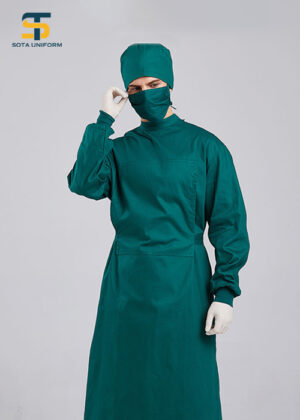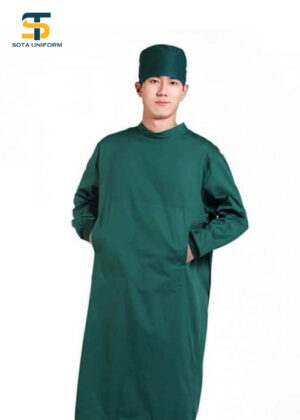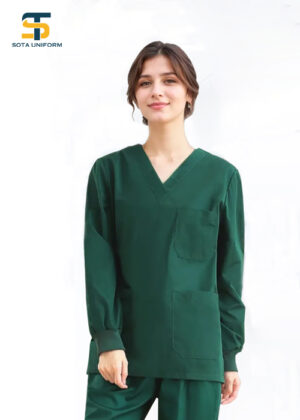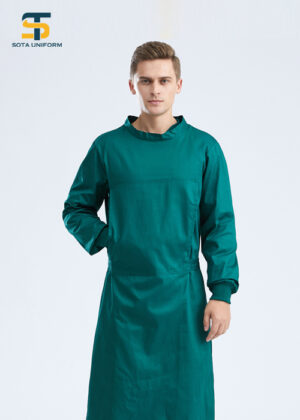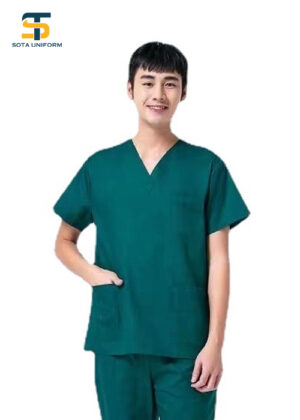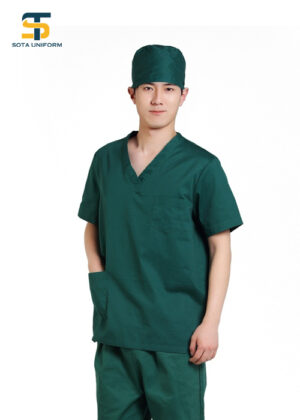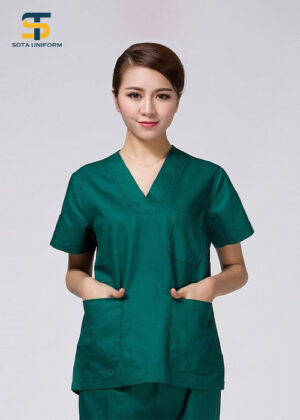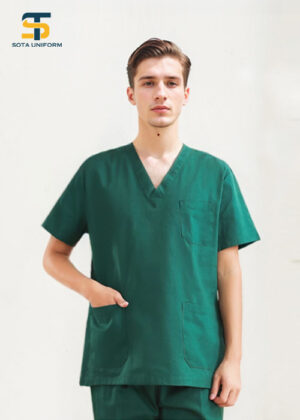Operating room uniforms
Operating room uniforms are special clothing used in operating rooms. This is a specialized uniform, different from other medical uniforms and often requires very strict design requirements. To learn more about operating room uniforms, refer to the following article by Sota Uniform!
The role of operating room uniforms
Ensure hygiene and limit disease
The operating room is a special area that not only needs to be clean but also requires strict standards regarding the doctor's attire. This helps to minimize the risk of infection after surgery.
During surgery, doctors will often come into contact with blood and other body fluids of patients. These fluids may contain bacteria or other infectious substances. Wearing surgical gowns will help limit the spread of pathogens to doctors.
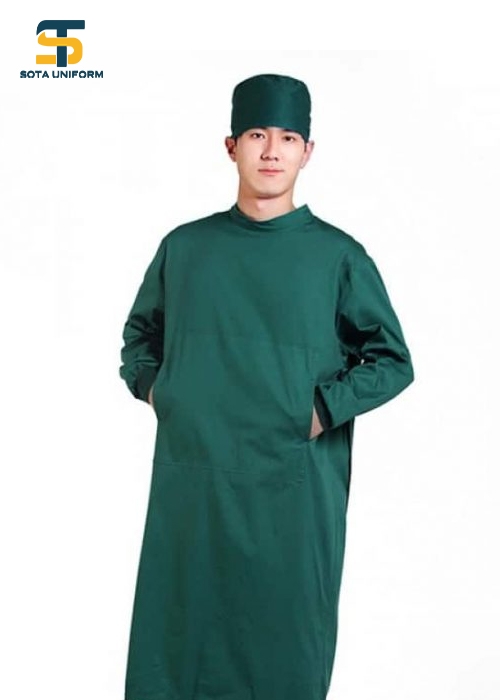
Reduces visual effects and eye strain
Doctors have to concentrate for a long time during surgery, combined with strong lights, which can easily cause eye strain. In addition, constantly looking at blood also causes visual effects of color, which greatly affects surgery.
Therefore, the color of the operating room uniform is also carefully selected in terms of color. The blue color of the uniform has the effect of balancing the white light, helping to reduce eye strain, thereby enhancing the doctor's ability to concentrate during surgery. This not only helps the surgery go smoothly but also ensures the safety of the patient.
Show professionalism
Operating room uniforms play an important role in building a professional image for hospitals in particular and the medical industry in general.
For hospitals, the image of neat and tidy uniforms helps create a good impression of service quality in the eyes of patients. This makes patients feel more secure when choosing the hospital as a place for treatment.
For the medical industry, the image of doctors and nurses in professional operating room uniforms, dedicated to patient care, contributes to enhancing the prestige and position of the medical industry in society. Operating room uniforms help create uniformity and professionalism throughout the medical industry. No matter where they work, medical staff wear uniforms that demonstrate their sense of responsibility and dedication to their profession. Operating room uniforms are not only clothing but also a symbol of pride in the tradition and noble mission of the medical industry.
Ensure comfort for the doctor
Operating room uniforms are often designed according to medical regulations, ensuring comfort and convenience for doctors during work.
The fabric is carefully selected, usually soft, breathable, and sweat-absorbent, helping doctors feel comfortable even when working continuously for many hours. The uniform design is also optimized, with skillful cuts and seams that do not cause entanglement or restrict movement, allowing doctors to operate flexibly and accurately during surgery.
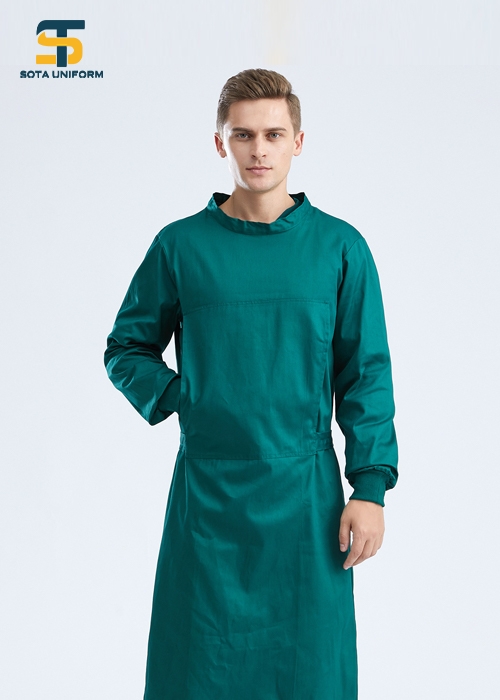
Operating room uniform regulations
Design
Due to the specific nature of the job, operating room uniforms are specially designed to ensure comfort for doctors during surgery.
The usual style of a doctor's uniform is a V-neck, short-sleeved shirt combined with wide-leg pants with drawstrings. When performing surgery, doctors need to wear a specialized coat on the outside. This shirt is usually designed as a gown, knee-length, with elasticized sleeves and a tie in the back. This design helps doctors move easily during surgery and ensures hygiene according to regulations of the Ministry of Health.
Color
Operating room uniforms are very strict about color because it is directly related to the nature of the work. This uniform is usually teal or green, and there is a very important reason behind this choice. This color not only helps reduce pressure but also regulates the doctor's eyes, avoiding eye fatigue or discomfort during long surgeries.
In fact, when entering the operating room, doctors have to concentrate on the surgical site. This means that they are constantly exposed to the red color of blood. Without adjustment, the eyes will easily get tired and lose accuracy. The green or teal color above will help limit the visual effect. When the doctor shifts his gaze from the red color of blood to the light blue color of the uniform, the eyes will be relaxed, reduce stress and enhance the ability to distinguish colors, thereby helping them perform the surgery more accurately and effectively.

Material
When sewing operating room uniforms, priority should be given to choosing materials that are suitable for the nature of the work and comply with the regulations of the Ministry of Health.
You should choose fabric that does not attract dust, helps maintain hygiene and minimizes the risk of infection. In particular, the fabric should not absorb water or body fluids to ensure the health and safety of the doctor.
In addition, choose materials that are easy to clean and sterilize without affecting the fabric quality, ensuring hygiene and safety for each use. Another important factor is that the fabric must be breathable and sweat-absorbent. This helps create comfort for medical staff throughout the work process, especially during long surgeries.
Materials for sewing operating room uniforms
Cashmere fabric
Cashmere fabric is known as a high-quality material and is chosen by many hospitals when sewing operating room uniforms. The combination of polyester and spandex fibers has helped cashmere fabric possess outstanding advantages such as:
- High softness, comfortable to wear and does not cause skin irritation.
- The fabric has a firm form, ensuring the uniform retains its shape.
- The fabric contains spandex fibers with slight elasticity, creating a comfortable feeling when wearing all day long or when moving.
- High durability, increasing uniform usage time compared to other materials.
- Wrinkle-free fabric, no time-consuming ironing..
- The fabric is less pilling, limiting unsightly pilling.
- Has the ability to absorb sweat, is breathable and does not cause heat.
- Diverse colors with high color fastness.
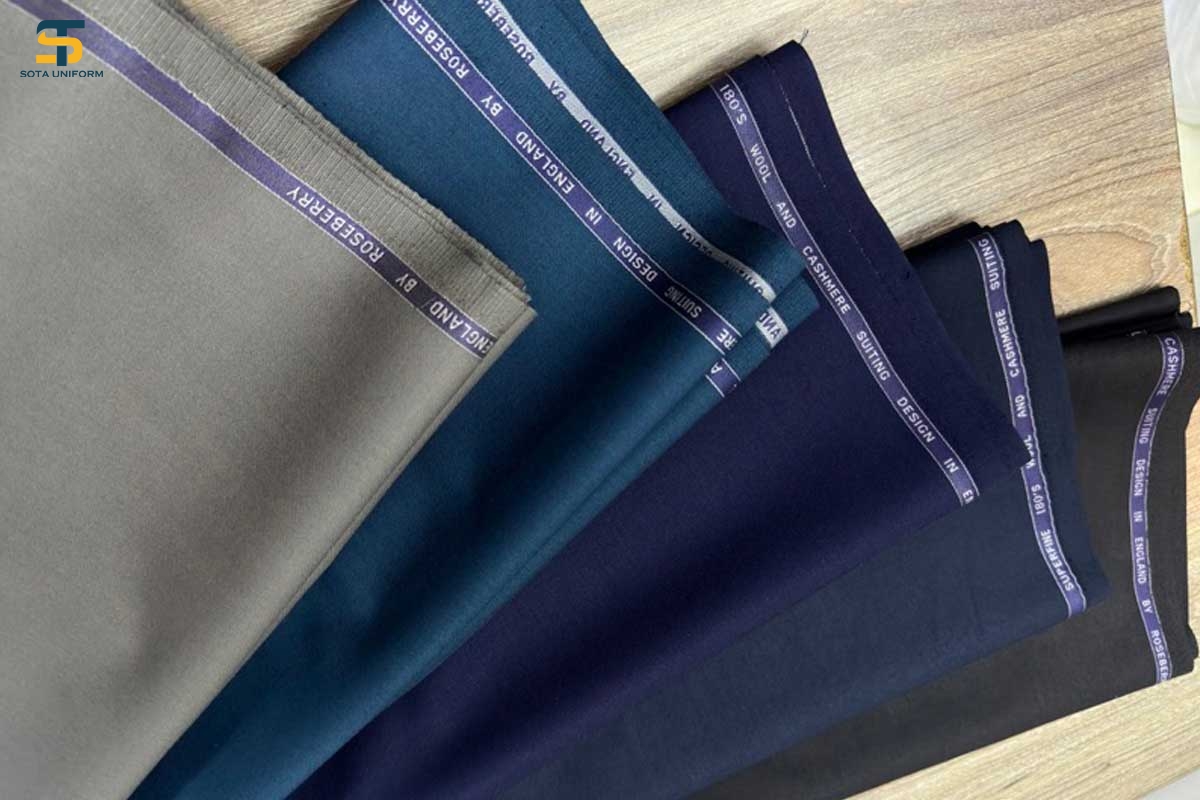
Kate Ford fabric
Kate Ford fabric is mainly made of cotton and artificial PE fibers with anti-wrinkle and high durability properties. This is a great choice to help save costs for hospitals when sewing operating room uniforms.
The typical advantages of Kate Ford fabric include:
- The fabric is thick and durable.
- Has good sweat absorption.
- Cool and non-irritating to the skin.
- Keep uniform form good.
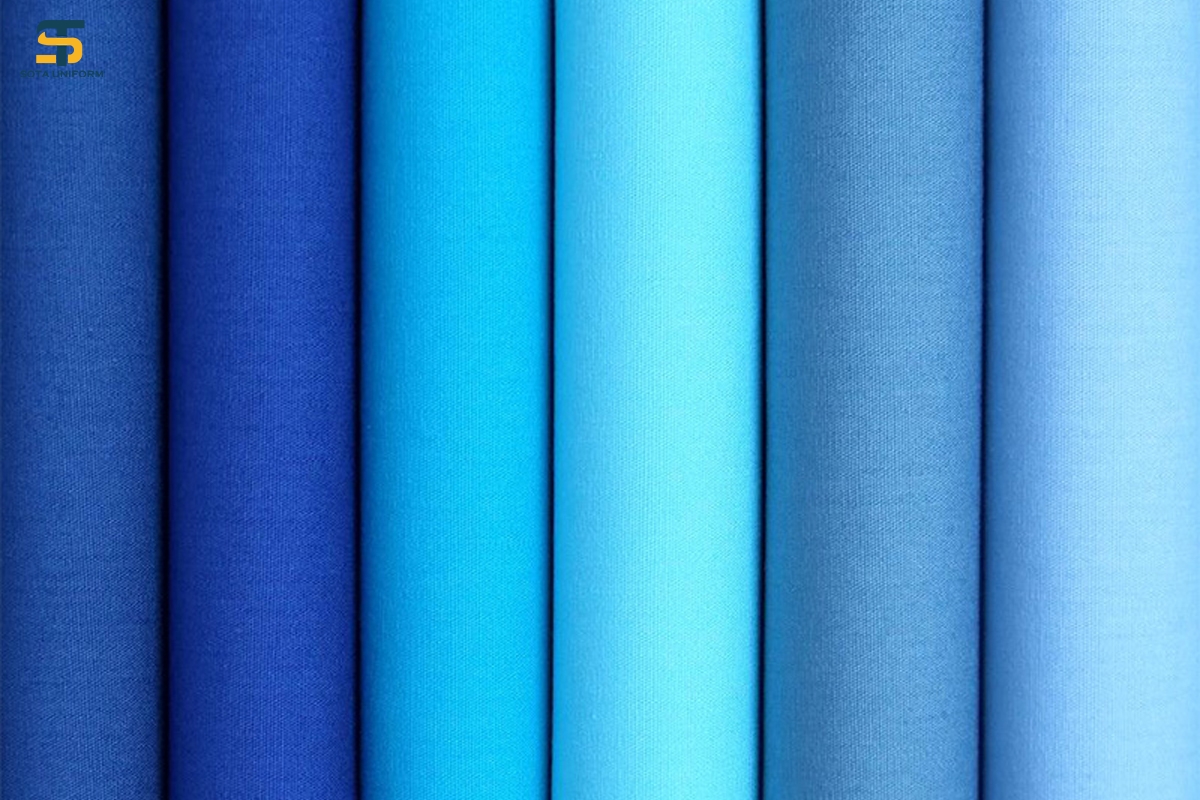
Kate silk fabric
Kate silk is a synthetic fiber made from cotton and polyester fibers. Usually based on the ratio of 35% Polyester and 65% cotton. Thanks to this combination, Kate fiber has many features and advantages of both cotton and polyester fabrics such as:
- The fabric has a good form retention ability.
- High durability and colorfastness.
- Fabric is less wrinkled and less pilling.
- Sweat absorbent and breathable.
- Safe and non-irritating to skin.
- Reasonable price.
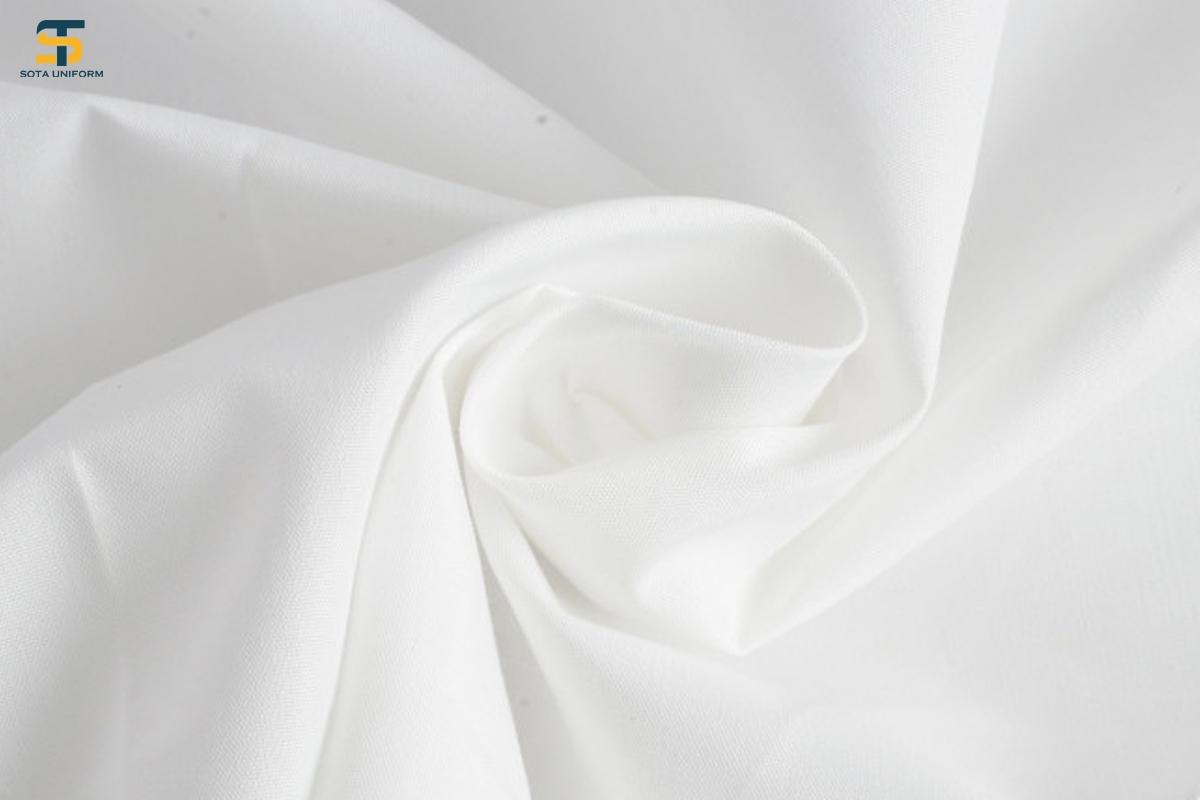
Oxford fabric
Oxford fabric is one of the fabrics with outstanding features in water resistance and strength. Tightly woven to create tiny squares on the surface, with the composition of 65% Poly, 35% Cotton, the fabric has advantages such as:
- Good water resistance due to high Polyester ratio, prevents moisture from sticking to the fabric for a long time, causing mold and odor.
- Light weight, softer than khaki, has very good dust resistance.
- Durable, good abrasion resistance.
- Easy to wash and maintain, dries quickly after washing.
- Has good anti-wrinkle ability.
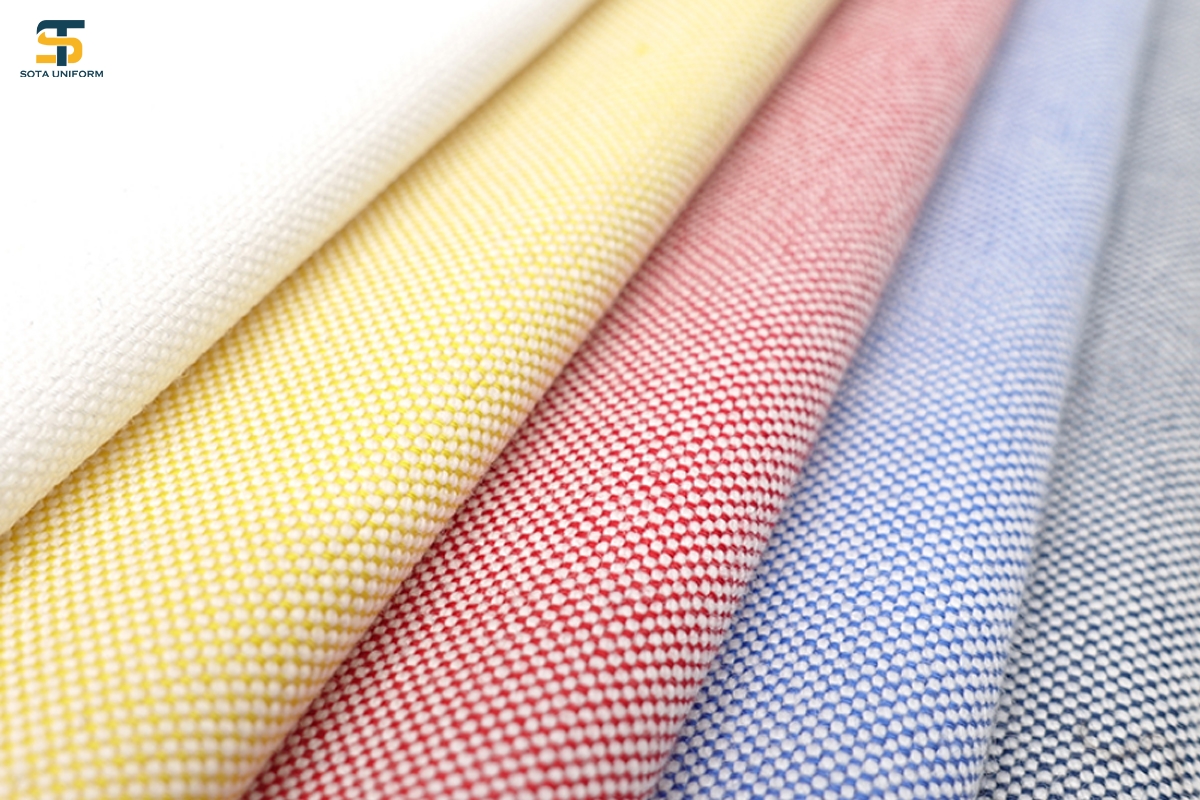
Where to sew quality operating room uniforms?

